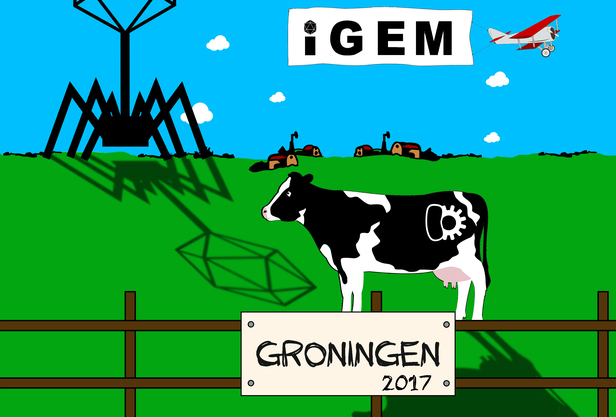When milk is processed into yoghurt or buttermilk, lactic acid bacteria cause the fermentation process. But these bacteria are susceptible to viruses. If the bacterium gets ill, the process fails and the milk needs to be thrown out. The Groningen iGem 2017 team wants to create a detection mechanism to sniff out these infections.
To that end, the students wanted to embed a CRISPR element in a lactic acid bacterium. This refers to a piece of an immune system that some bacteria have, not dissimilar to our own immune system. When a bacterium is infected with a virus, it will be able to recognise it.
The idea is to create a bacterium that will only detect specific, dangerous viruses. This will not only enable the detector cells to better defend themselves from the virus, they will also give off a signal that tells the manufacturer about the danger.
On Thursday, the twelve students will leave for Boston to present their project at the International Genetically Engineered Machine (iGem) competition 2017. There, hundreds of students from all over the world will present their ‘home-made’, socially relevant micro-organisms. Life Science and Technology student Meintje de Vries is one of them.
Twelve students of various nationalities and different scientific backgrounds. It sounds like a motley crew.
‘We did have some trouble here and there. Going in, we knew that communication was key, but you can’t help getting annoyed by people sometimes. The president tried to reconcile things, but that turned out to be difficult.’
‘In the end, there was one hard core, and other people were only called in when we needed them. Luckily we never had any real fights. For the people participating next year: make sure to have a clear overview of who is available when.’
The 30,000 euro needed for the project was mainly provided by the university and through sponsoring. You tried to raise the final 3,000 euro through crowdfunding, but that did not prove to be a great success. Are you still going to Boston?
‘Absolutely! The crowdfunding may not have netted us much money, perhaps because we could’ve done better in that. Fortunately, we raised enough funds with the help of business and through other campaigns. And our costs turned out lower than predicted. In terms of finances, we’re okay.’
How do you think you’ll do?
‘I personally think we could have done a better job with the research, but we’re doing really well on other fronts. We focused on communication and education, towards younger students for example. I did some guest classes at elementary schools to give them some basic knowledge. They would then visit us at Zernike, armed with that knowledge.’
What exactly was missing at the lab?
‘We were unable to get every single step in the process working. We had the pieces of DNA we were working with tested at a special company to make sure it was actually the DNA we thought it was. There turned out to be some differences between what we thought we had and what it actually was. That cost us quite a lot of time.’



